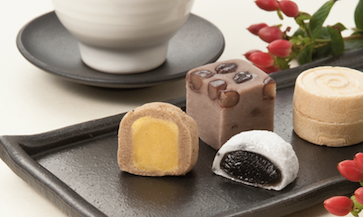
The World of Plant-Based, Seasonal Desserts
Recently I had the opportunity to meet Yasuharu Mizuhara, a 4th-generation owner of a well-known wagashi shop called Seigetsudo. First established in 1907, the shop is now over 100 years old.
*Note: Wagashi is a Japanese confectionary. There are many kinds to it, but it tends to be a colorful and small plant-based dessert, often served in traditional tea ceremonies.
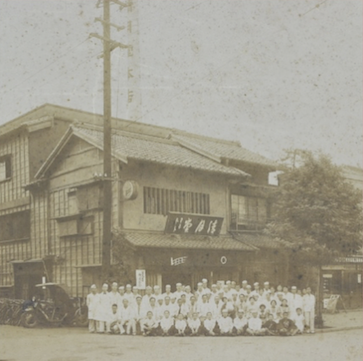
Do you feel a lot of pressure as a fourth-generation owner?
When our founder started Seigetsudo, he didn’t want our shop to be continuously making the same confectionaries. There’s a saying within the company, that every owner should be making a confectionary that matches the time of their generation. Right now our shop sells a piece called “otoshibumi” but that is something my father made. We continue to sell it, but I do feel a certain pressure right now to develop my own piece.
What does otoshibumi mean?
The piece my father made, otoshibumi, when carefully explained, illustrates a man who fell in love with a woman, and so he decided to write a love letter to her. But too shy, he was unable to hand her the letter and instead balled it up and left it on the sidewalk. The balled up love note is the “otoshibumi”.

What kind of confectionery would otoshibumi be?
It’s a steamed dessert, in two layers. The inner anko mixture is wrapped in the red bean anko, and together it’s steamed. It’s very delicate, and has that soft melt-in-your-mouth texture. It just falls apart on your tongue– as the story goes, the anko which dissolves on your tongue is that same feeling of warmth and liking you experience when you have a crush on someone. In this way, wagashi often has these indirect names which make the customer think about the story behind the dessert.
*Note: Anko is a sweet bean paste often used in Japanese desserts.
To make them think?
Like even if it were a cherry blossom, the dessert would embody a very specific point in that flower’s life cycle. For example, it could be from when the flower is just budding, in full bloom, or even after its petals have fallen, and created a pink blanket of flower petals down a river. We call this part of a sakura’s life cycle “hanaikada”, because the fallen petals almost look like a pink raft when it’s floating down a river.
*Note: “Hanaikada” directly translates to “flower raft”
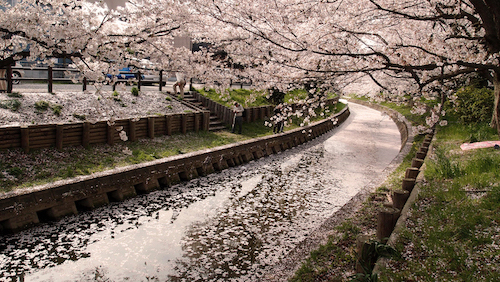
What kinds of themes are common in wagashi?
Well, the seasons are a pretty common theme because they are often used in traditional Japanese tea ceremonies. But when I say seasons, they’re quite specific. For example, the autumn season but towards the end when the colors have deepened. The seasons are actually traditionally divided into 24 solar terms in the East Asian calendar, instead of the four commonly used today.
Oh yes, I’m familiar with that
Did you practice tea as well?
No, not at all. But when my American friends were visiting Japan, they told me they wanted to do a traditional Japanese tea ceremony, and so I took them to one.
Haha, I see. In an odd way, in Japan they say that foreigners love matcha, but even when I come to New York I don’t see it very often. Or if I do see it, it wouldn’t be like a sit-down cafe, where they primarily sell matcha drinks and wagashi.
I guess not. I think most people see matcha as a flavor, in cookie or snack form, rather than a formal drink.
Ah, I see. I guess we can’t help but see some traditional parts of our culture lean towards the trendy side.
In America and Europe veganism is a huge trend right now, but I think traditionally vegan desserts are pretty rare in general. But wagashi, given its history in Buddhism, tends to not use any animal products right?
Compared to western desserts, Japanese wagashi is definitely lower calorie and in general doesn’t use animal products, so it’s a very suitable dessert option for vegans. My wife tells me I should be pushing that point a bit more in marketing, but I wonder how many individuals are vegan in Japan.
I don’t think it’s very common for Japanese people to go on strict diets or eliminate specific foods.
Exactly, I don’t think most Japanese people adopt that sort of extreme way of thinking about food.
This time of year, what kind of sweets are in season?
Well from about the beginning of February we’ve been selling sakura-mochi. The origin of sakura mochi actually comes from Chomyoji temple. Have you ever heard of Chomyoji sakura-mochi?
No, I have not.
Chomyoji is a temple located near Sumidagawa river, and there’s a lot of sakura trees growing along the bank. And so there was a gatekeeper there who would always be sweeping all of the sakura leaves late spring, and he thought that they were such a waste. So he took the fallen leaves, preserved them in salt water, and then wrapped mochi in it. And that’s how the sakura mochi was invented.
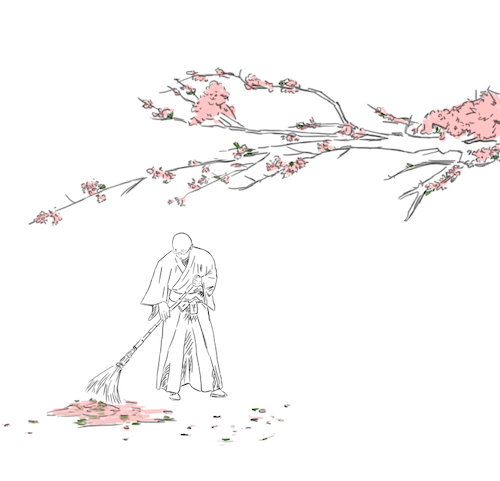
Do you have a favorite Japanese wagashi?
When I was young, my dad used to always bring home this mizu-yokan. It would just be in this rectangular container, and he’d always leave it in the fridge. It was so soft, unbelievably soft. That is one really memorable dessert that I love. I really just want to make simple desserts like that, but a lot of people today want desserts that photograph well and look fancy. But in an odd way, it’s actually more difficult to make simple desserts than it is to make more ornate ones.
I feel like there’s something about simplicity in food that’s calming to the soul. It’s so trendy now to serve these desserts purely for the sake of Instagram. It’d have decorations, glitter, sometimes candles and fireworks, but I think it’s a lot…
But you see, it’s those kinds of flashy desserts that get sold, and so I’m in a pickle haha.
To you, what is the best part about wagashi, that other desserts don’t have?
I mean, I have to say the relationship with the seasons. I think it’s very rare for desserts to change with the seasons. When sakura-mochi ends, we have kashiwa-mochi to welcome the next solar term. And when kashiwa-mochi ends, we have mizu-yokan for the summer. To be able to experience the seasons with your food, I think that’s a very special element.
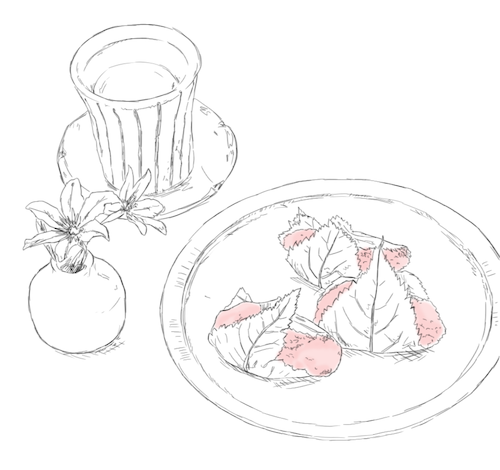

If you enjoyed this story, let me know at kokumura@kakikata.space! I would love to pass along your comment to Mr. Mizuhara. In addition, if you have any questions, please reach out because I would love to hear from you!
Warm regards,
Kaki